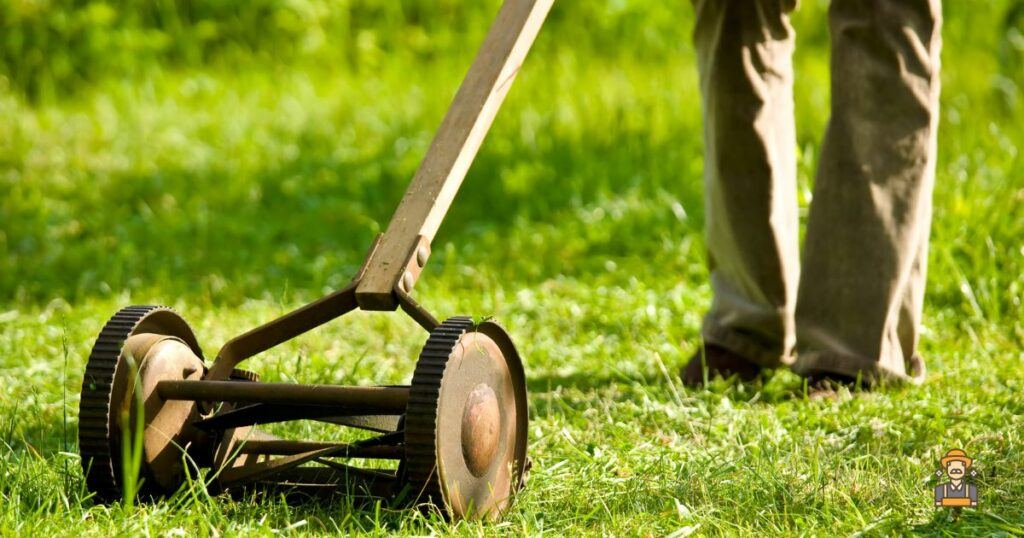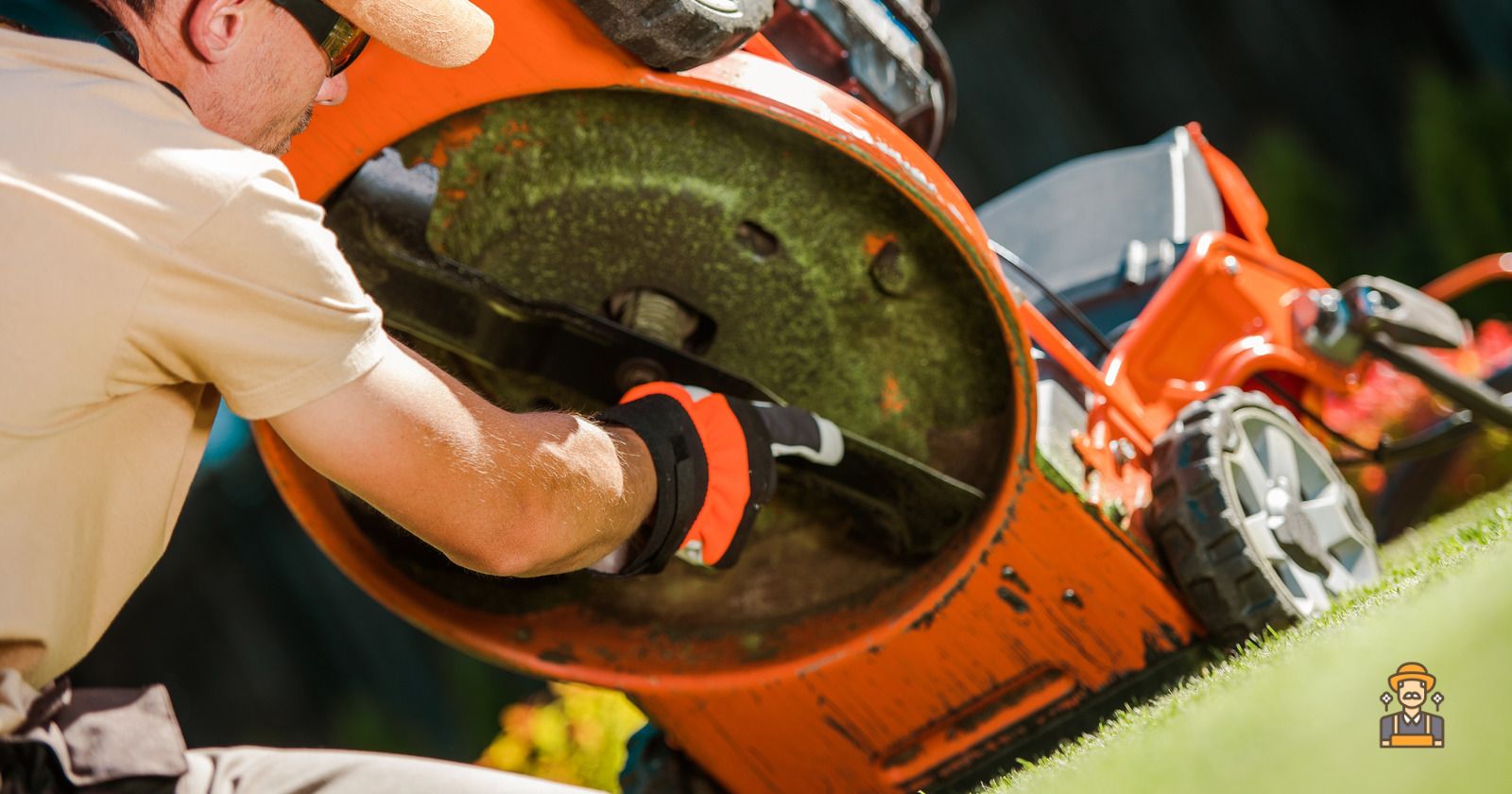Maintaining your lawn mower is essential to keep it running efficiently and extending its life. A well-maintained mower will help you achieve a beautiful, healthy lawn and save you money on costly repairs. In this article, we’ll discuss how to maintain a lawn mower with several tips and steps to ensure your lawn mower lasts as long as possible.
First, it’s important to remember that routine maintenance is crucial. By taking the time to regularly check your mower’s performance, you can identify small issues before they become major problems. Some essential tasks include changing the oil, cleaning the deck, and inspecting the blade. Additionally, proper storage and seasonal care will play a significant role in preserving your lawn mower’s lifespan.
Over time, you’ll gain a better understanding of your lawn mower’s specific needs and requirements. By following these maintenance tips and seeking professional assistance when necessary, you can enjoy a reliable and efficient lawn mower for years to come.
Choosing the Right Lawn Mower
When it comes to maintaining your lawn mower for a long life, selecting the right type is crucial. There are various factors to consider, such as the size of your lawn, your physical abilities, and the available power sources. To make the best choice, let’s dive into the main differences between gas and electric mowers, as well as riding and push mowers.
Gas vs Electric
Gas Mowers:

These lawn mowers rely on gasoline for power. They tend to be more powerful than electric models, which is beneficial for larger lawns or areas with thick grass or weeds. However, they require more maintenance, including regular oil changes, spark plug replacements, and fuel stabilizer usage. Gas mowers also emit pollutants, making them less environmentally friendly.
Electric Mowers:

Environmentally-conscious homeowners often opt for electric lawn mowers as they produce fewer emissions. Electric mowers can be corded, requiring access to electrical outlets, or cordless, running on rechargeable batteries. They typically have less power than gas mowers, but they are more suitable for small to medium-sized lawns. Additionally, they require less maintenance compared to their gas counterparts, making them more convenient to use.
Riding vs Push Mowers
Riding Mowers:

If you have a large lawn or difficulty dealing with push mowers, a riding lawn mower could be the right option for you. These mowers, also called lawn tractors or zero-turn mowers, allow you to drive them around, making mowing faster and more comfortable. Riding mowers are available in both gas and electric models, with gas options generally yielding more power. Keep in mind that riding mowers require more storage space and have a higher price tag compared to push mowers.
Push Mowers:

Push mowers, also known as walk-behind mowers, are suitable for most residential lawns. They come in various types, including gas, electric, and manual reel mowers. Push mowers require physical exertion to maneuver, but they offer excellent control and are generally more affordable than riding mowers. They also take up less storage space, making them a practical option for homeowners with limited space.
By considering your lawn’s specific needs and your preferences, you can choose the right lawn mower to keep it healthy and looking great. Remember, regardless of the type you select, regular maintenance is essential to ensure a long life for your mower.
Routine Maintenance
Cleaning the Mower Deck
To maintain your lawn mower’s efficiency and prolong its life, regularly clean the mower deck. Keep the area beneath the mower deck free of grass clippings to reduce rust buildup. Using water is good, but always remember to wipe the deck off after rinsing the mower. After cleaning, inspect the mower deck for any damage, and repair or replace the components if needed.
Checking and Changing the Oil
Change your lawn mower oil at regular intervals to ensure it performs up to its maximum capacity. Old oil that is black or contains debris should be drained and replaced. This will improve performance, reduce costly repairs, and extend the engine life of gas lawn mowers. Check the oil level regularly, and if it’s low, top it up with the appropriate type of oil.
Inspecting and Replacing the Air Filter
A clean air filter is essential for your mower’s engine to breathe efficiently. Regularly inspect the air filter and clean it when necessary. If the filter is damaged or clogged despite cleaning, replace it. A well-maintained air filter will increase fuel efficiency and engine performance.
Inspecting and Replacing Spark Plugs
Lawn mower spark plugs can degrade rapidly and are vital to the engine’s functioning. Routinely inspect the spark plugs for any signs of wear or damage, and replace them if necessary. Replacing worn or damaged spark plugs will enhance your mower’s performance and help maintain its engine.
Inspecting and Replacing the Fuel Filter
A clean fuel filter ensures a steady flow of fuel to your lawn mower’s engine. Check the fuel filter regularly and replace it when it becomes clogged or dirty. If your mower is experiencing performance issues, such as reduced power or difficulty starting, a dirty fuel filter could be the cause.
Inspecting and Inflating Tires
Properly inflated tires provide better traction, stability, and overall performance when mowing your lawn. Periodically inspect the tires for damage, such as punctures or cuts, and replace them if necessary. Check the tire pressure and inflate them to the manufacturer’s recommended level to ensure optimal performance and extend the life of your lawn mower6.
Mower Blade Care
Inspecting for Wear and Damage
Regularly inspect your lawn mower blades for wear and damage. Keep an eye out for cracks, bends, or broken edges that can impact the mower’s cutting efficiency. Remove any debris or grass clippings from the blades after each use to prevent buildup and reduce the risk of rust.
Sharpening or Replacing Mower Blades
Dull mower blades may affect the health of your lawn and the efficiency of your mower. Thus, it’s essential to sharpen or replace them when needed. To sharpen lawn mower blades:
- Disconnect the spark plug to ensure the mower cannot accidentally start.
- Tilt the mower on its side with the spark plug facing up.
- Use a wrench to remove the blade carefully.
- Sharpen the edge of the blade using a 10-inch file or grindstone, keeping the file at roughly a 45-degree angle. Note: Sharpen from the top side of the cutting edge, pushing the file in one direction along the blade. Avoid sawing back and forth to maintain the blade’s integrity.
After sharpening, reinstall the blade onto the mower and tighten the bolts securely. If the blades are significantly damaged or worn, consider replacing them instead.
Maintaining your mower blades by inspecting for wear, keeping them clean and sharpened, or replacing them when necessary ensures optimal efficiency and prolongs your lawn mower’s life.
Fuel and Carburetor Maintenance
Using Fuel Stabilizers
To preserve your lawn mower’s engine and maintain peak performance, it’s crucial to use fuel stabilizers in your gasoline. Adding a fuel stabilizer prevents the ethanol content in the gasoline from deteriorating and potentially causing harm to your lawn mower’s carburetor.
Here are some steps to using fuel stabilizers effectively:
- Choose a suitable fuel stabilizer for your lawn mower.
- Follow the manufacturer’s recommendations on the stabilizer-to-gasoline ratio.
- Add the appropriate amount of fuel stabilizer to your fuel storage container or directly into your mower’s tank.
- Mix the fuel and stabilizer well.
- Use the treated gasoline for your lawn mower, ensuring optimal engine performance.
Draining Fuel Tank and Carburetor before Storage
When storing your lawn mower for an extended period, it’s essential to drain both the fuel tank and carburetor, as it helps prevent gum deposits and corrosion. This simple maintenance step can prolong the life of your lawn mower. To drain the fuel tank and carburetor, follow these steps:
- Run your lawn mower to a low fuel level or use a fuel siphon to remove gasoline from the tank.
- Start your mower, allowing it to continue running until it consumes the remaining fuel and shuts off. This process will empty the carburetor as well.
- Disconnect the spark plug before performing any further maintenance.
Cleaning the Carburetor
Regular carburetor cleaning is vital to ensure optimal performance and prevent future problems. A clean carburetor ensures smooth fuel flow, which directly impacts your lawn mower’s overall performance. To clean the carburetor:
- Remove the carburetor from your lawn mower, following the manufacturer’s instructions.
- Clean around the bowl with a carburetor cleaner (source).
- Disassemble the carburetor, and clean each component thoroughly, using a carburetor cleaner and compressed air.
- Reassemble the carburetor and reinstall it on your mower, ensuring all connections are secure.
By following these fuel and carburetor maintenance tips, you can effectively extend the life of your lawn mower and maintain its performance.
Battery Care for Electric and Riding Mowers
Checking and Charging the Battery
To maintain a lawn mower for long life, it’s essential to take care of the battery. For electric and riding mowers, always visually inspect your battery and charger before each use. Make sure the battery compartment is dry and free of debris.
Regularly charging your battery is crucial to ensure the mower starts up when you need it. For riding mowers with standard 12-volt lead-acid car batteries, leave it charging at all times when not in use. Use a volt-meter to check the state of charge before each mowing. If any batteries show less than 12 volts, they may need to be replaced. For lithium-ion batteries, such as those in electric mowers, follow this break-in procedure to maintain peak performance:
- Charge the battery to 100% upon delivery.
- Run the mower from full charge to 2-3% battery charge, and recharge to 100%.
- Repeat this four times, recharging fully to 100% each time.
Replacing the Battery when Necessary
No battery lasts forever, so it’s essential to know when to replace your mower’s battery. For electric mowers, the battery life can degrade over time, eventually needing replacement. If your electric mower still features the standard 12-volt lead-acid car batteries, if a fully charged battery continues to show less than 12 volts, it’s time to replace them.
In summary, to maintain a lawn mower’s battery for long life:
- Check and charge the battery regularly
- Perform the break-in procedure for lithium-ion batteries
- Replace the battery when it no longer holds an adequate charge or shows less than 12 volts
By following these battery care tips and guidelines, you can help prolong the life and effectiveness of your electric or riding lawn mower.
Storing Your Lawn Mower
Properly Cleaning and Drying
Before storing your lawn mower, it’s crucial to thoroughly clean and dry it to prevent any potential issues. Ensure that you remove any grass clippings, dirt, and debris from the mower deck, as well as the blades and wheels. You should also wipe down the engine and other exposed metal parts to remove any moisture that may have accumulated during usage. Doing this will help prevent rust and keep your mower in better condition for the long run.
Protecting from Rust and Corrosion
To further protect your lawn mower from rust and corrosion, consider applying a layer of a rust-preventative spray or lubricant to the mower’s exposed metal parts after cleaning and drying them. Ensure to follow the manufacturer’s guidelines for any required maintenance involving lubrication or application of protective sprays.
Choosing the Right Storage Location
The location where you store your lawn mower has a significant impact on its longevity. Ideally, you should store your mower in a dry, cool, and well-ventilated space, such as a garage or shed. If a garage or shed is not available, consider using a waterproof lawn mower cover to shield it from the elements when storing it outside. When choosing a storage location, avoid placing your mower directly on the ground, as this can trap moisture underneath it and contribute to rusting.
Additionally, check your mower’s owner’s manual for any specific storage recommendations from the manufacturer. Some mowers may have unique storage requirements, such as vertical storage or specific temperature and humidity ranges, so it’s essential to follow the manufacturer’s guidelines to ensure the mower’s longevity.
By properly cleaning and drying your lawn mower, protecting it from rust and corrosion, and choosing the right storage location, you can help maintain your mower for a longer life and enjoy a healthy, well-trimmed lawn for years to come.
Professional Lawn Mower Service
When to Seek Professional Help
It’s essential to recognize when it’s best to seek professional help for your lawn mower maintenance. Some common scenarios when professional assistance is necessary include:
- When you’re dealing with a malfunction that you’re unable to diagnose or fix by yourself
- If your lawn mower has gone without proper maintenance for an extended period and requires a complete inspection and tune-up
- If your lawn mower is under warranty, regular servicing might be a requirement to preserve that coverage
Taking care of your investment in a lawn mower means knowing when to call in the experts to ensure it operates efficiently and preserves its lifespan.
Finding a Reputable Lawn Mower Service
To find a reputable lawn mower service, follow these guidelines:
- Ask for recommendations: Seek suggestions from friends, family, or neighbors who have well-maintained lawns. They may have a trusted service provider they can refer you to.
- Research online: Look for lawn mower service providers in your area and check their online reviews. Websites like Yelp offer valuable customer feedback.
- Verify experience: Choose a service with experience in working on your specific lawn mower brand and type (gas, electric, or manual reel).
- Get multiple quotes: When inquiring about lawn mower servicing, request quotes from multiple providers to compare the costs, services, and timeline for repairs or maintenance.
By taking these steps, you can find and compare lawn mower service providers to ensure your lawn mower receives the best possible maintenance, keeping it running smoothly and extending its life.
Preventing Lawn Disease and Damage
Proper Mowing Techniques
One way to prevent lawn diseases and damage is to use proper mowing techniques. Ensure that your mower blade is sharp, as a dull blade can create a ragged cut and cause discoloration to your grass. Replace or sharpen the blade according to the manufacturer’s instructions to prevent ongoing damage.
When mowing, avoid cutting your grass too short, as this can stress the grass and make it more susceptible to disease. Additionally, mow when the grass is dry to reduce the spread of pathogens. Finally, change the mowing direction each time to help the grass stand up straight and avoid ruts.
Additional Lawn Mower Resources
If you are looking for more tutorials, walkthroughs and troubleshooting for Lawn Mowers, here are our most recent posts:
Maintaining a Healthy Lawn
A healthy lawn is less prone to disease and damage. Here are some ways to maintain a healthy lawn:
- Aerate the soil: Aerate your lawn to relieve soil compaction, which can stress grass and make it more vulnerable to diseases. Aerating also allows air, water, and nutrients to penetrate the root zone, promoting healthy growth.
- Fertilize appropriately: Use the right amount of nitrogen fertilizer, as too much can contribute to the growth of fungus. Wrightmfg suggests applying the correct amount based on your grass type and soil needs.
- Irrigation: Ensure your lawn receives an adequate amount of water, as both too much and too little can cause stress and trigger disease. Monitor the weather and water as needed, providing approximately 1 inch of water per week.
- Thatch management: Prevent the buildup of dead roots, leaves, and stems, also known as thatch. Excessive thatch can restrict air, water, and root growth, creating an environment conducive to fungal diseases. Remove excessive thatch through raking or dethatching.
By following proper mowing techniques and maintaining a healthy lawn, you can help prevent lawn diseases and damage, keeping your grass looking its best.
